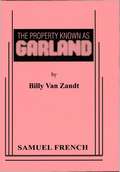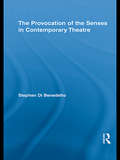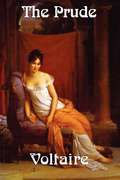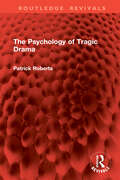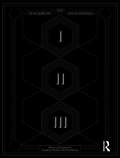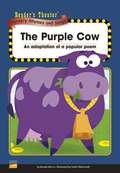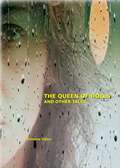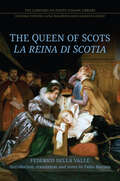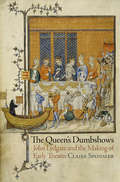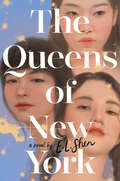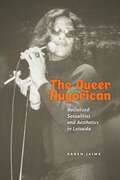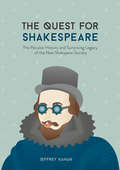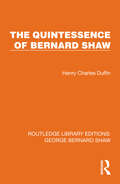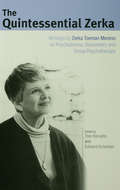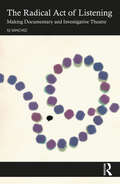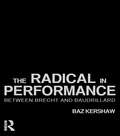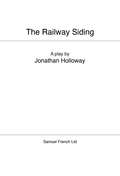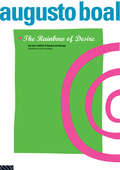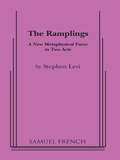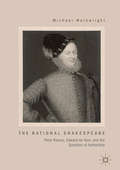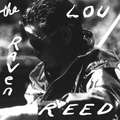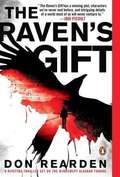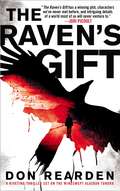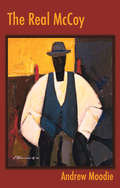- Table View
- List View
The Property Known As Garland
by Billy Van ZandtComedy / 1m, 1f / Interior / Her talent is legendary. Her wit, sublime. Her true story more electrifying than you'd ever imagine. She is Judy Garland. Adrienne Barbeau starred in this fictional backstage account of Judy's final concert appearance. With her wicked wit, Judy dishes the dirt on her co-stars, ex-husbands, Mr. Mayer, and more- taking us down the rocky yellow brick road of her incredible life. An amazing tour-de-force.
The Provocation of the Senses in Contemporary Theatre (Routledge Advances In Theatre And Performance Studies #13)
by Stephen Di BenedettoDi Benedetto considers theatrical practice through the lens of contemporary neuroscientific discoveries in this provoking study, which lays the foundation for considering the physiological basis of the power of theatre practice to affect human behavior. He presents a basic summary of the ways that the senses function in relation to cognitive science and physiology, offering an overview of dominant trends of discussion on the realm of the senses in performance. Also presented are examples of how those ideas are illustrated in recent theatrical presentations, and how the different senses form the structure of a theatrical event. Di Benedetto concludes by suggesting the possible implications these neuroscientific ideas have upon our understanding of theatrical composition, audience response, and the generation of meaning.
The Prude
by VoltaireThis comedy is partly imitated from an English piece, called the Plain Dealer. It does not suit very well for the French stage; the manners are too rough and bold, though much less so than in the original. The English seem to take too much liberty, and the French too little. -Voltaire Wilder Publications is a green publisher. All of our books are printed to order. This reduces waste and helps us keep prices low while greatly reducing our impact on the environment.
The Psychology of Tragic Drama (Routledge Revivals)
by Patrick RobertsFirst published in 1975, The Psychology of Tragic Drama offers an interpretation of some of the themes of both ancient and modern tragic drama through an investigation of the plays in the light of psychoanalytical ideas.In his introduction, the author explains and defends the application of psychoanalytical insights to the study of literature. Then in the first part of the book, he proceeds to an exploration of some primitive and infantile situations expressed in Euripides’ Bacchae and in a group of modern dramas by Strindberg, Pinter, Ionesco and Weiss. In the second part he turns to the drama of Aeschylus, Sophocles and Euripides, tracing the psychological history of Orestes and Electra from their Greek originals to their later re-creations in more modern settings, in the plays of O’Neill, Eliot and Sartre, and comparing the treatment of themes and motifs which also reappear in Macbeth and Hedda Gabler. In conclusion, Patrick Roberts discusses the loss and gain involved in the diffused awareness among modern dramatists of psychoanalytical ideas and influence; indeed, the book as a whole stands as a confirmation and expansion of Freud’s comment ‘that poets and philosophers before me discovered the unconscious’. As such, it will appeal not only to all students of serious drama but to all those interested in the two disciplines of literature and psychoanalysis.
The Punchdrunk Encyclopaedia
by Josephine MachonThe Punchdrunk Encyclopaedia is the definitive book on the company’s work to date, marking eighteen years of Punchdrunk’s existence. It provides the first full-scale, historical account of one of the world’s foremost immersive theatre companies, drawn from unrivalled access to the collective memory and archives of their core creative team. The playful encyclopaedic format, much like a Punchdrunk masked show, invites readers to create their own journey through the ideas, aesthetics, contexts, and practices that underpin Punchdrunk’s work. Interjections from Felix Barrett, Stephen Dobbie, Maxine Doyle, Peter Higgin, Beatrice Minns, Colin Nightingale and Livi Vaughan, among others, fill out the picture with in-depth reflections. Charting Punchdrunk’s rise from the fringe to the mainstream, this encyclopaedia records the founding principles and mission of the company, documenting its evolving creative process and operational structures. It has been compiled to be useful to scholars and students from a variety of backgrounds and disciplines, from secondary level through to doctoral research, and is intended for those with a fascination for theatre in general and immersive work in particular. Ultimately it is written for those who have dared to come play with Punchdrunk across the years. It is also offered to the curious; those adventurers ready and waiting to be immersed in Punchdrunk worlds.
The Purple Cow: An Adaptation of a Popular Poem
by Jeffrey B. Fuerst Brooke Harris Cedric HohnstadtStudents meet some very rare animals on a field trip to a special farm.
The Queen of Dolls and Other Tales
by Romana VillariThe Queen Of Dolls And Other Tales by Romana Villari Noir stories for those who love to walk the path of restlessness without stopping The Queen Of Dolls And Other Tales The body of an elderly lady is found in mysterious circumstances. It seems a news story like many others behind which lies an intrigue that Vittoria will discover thanks to her sensorial gifts. The paranormal runs through all the stories of the collection as a guiding thread.
The Queen of Scots: La reina di Scotia (Lorenzo Da Ponte Italian Library)
by Federico Della ValleFrom the moment of her spectacular death on the scaffold, the story of Mary Queen of Scots became nothing short of a sensation across Europe. She was executed on 8 February 1587, and her death was the climax of a captivity that lasted over eighteen years. Shortly after the event, Federico Della Valle, one of Italy’s most accomplished dramatists of the time, composed La reina di Scotia (The Queen of Scots), a tragedy depicting the final hours of the Scottish queen’s life. With its restrained tone, streamlined action, and refined poetic language, The Queen of Scots ranks among the very best of early modern Italian drama. In this book, Fabio Battista provides an English-language annotated edition of Della Valle’s work, accompanied by a comprehensive introduction exploring the fictional afterlife of Mary Queen of Scots from the early modern period to today. The volume also includes the English translation of a widely circulated letter detailing the queen’s momentous execution. Made available to an English-speaking audience for the first time, this tragedy is the earliest dramatic reworking of the death of Mary Queen of Scots in a modern vernacular, spearheading a tradition that endures to this day.
The Queen's Dumbshows
by Claire SponslerNo medieval writer reveals more about early English drama than John Lydgate, Claire Sponsler contends. Best known for his enormously long narrative poems The Fall of Princes and The Troy Book, Lydgate also wrote numerous verses related to theatrical performances and ceremonies. This rich yet understudied body of material includes mummings for London guildsmen and sheriffs, texts for wall hangings that combined pictures and poetry, a Corpus Christi procession, and entertainments for the young Henry VI and his mother.In The Queen's Dumbshows, Sponsler reclaims these writings to reveal what they have to tell us about performance practices in the late Middle Ages. Placing theatricality at the hub of fifteenth-century British culture, she rethinks what constituted drama in the period and explores the relationship between private forms of entertainment, such as household banquets, and more overtly public forms of political theater, such as royal entries and processions. She delineates the intersection of performance with other forms of representation such as feasts, pictorial displays, and tableaux, and parses the connections between the primarily visual and aural modes of performance and the reading of literary texts written on paper or parchment. In doing so, she has written a book of signal importance to scholars of medieval literature and culture, theater history, and visual studies.
The Queens of New York: A Novel
by E. L. ShenFrom acclaimed author E. L. Shen comes a sun-drenched, cinematic YA novel about three Asian American girls, their unbreakable bond, and one life-changing summer, perfect for fans of The Sisterhood of the Traveling Pants.Best friends Jia Lee, Ariel Kim, and Everett Hoang are inseparable. But this summer, they won’t be together.Everett, aspiring Broadway star, hopes to nab the lead role in an Ohio theater production, but soon realizes that talent and drive can only get her so far. Brainy Ariel is flying to San Francisco for a prestigious STEM scholarship, even though her heart is in South Korea, where her sister died last year. And stable, solid Jia will be home in Flushing, juggling her parents’ Chinatown restaurant, a cute new neighbor, and dreams for an uncertain future.As the girls navigate heartbreaking surprises and shocking self-discoveries, they find that even though they’re physically apart, they are still mighty together.
The Queer Nuyorican: Racialized Sexualities and Aesthetics in Loisaida (Performance and American Cultures #4)
by Karen JaimeFinalist for The Barnard Hewitt Award for Outstanding Research in Theatre History, given by the American Society for Theatre Research.Silver Medal Winner of The Victor Villaseñor Best Latino Focused Non-Fiction Book Award, given by the International Latino Book Awards.Honorable Mention for the Best LGBTQ+ Themed Book, given by the International Latino Book Awards.A queer genealogy of the famous performance space and the nuyorican aesthetic One could easily overlook the Nuyorican Poets Cafe, a small, unassuming performance venue on New York City’s Lower East Side. Yet the space once hosted the likes of Victor Hernández Cruz, Allen Ginsberg, and Amiri Baraka and is widely credited as the homespace for the emergent nuyorican literary and aesthetic movement of the 1990s. Founded by a group of counterculturalist Puerto Rican immigrants and artists in the 1970s, the space slowly transformed the Puerto Rican ethnic and cultural associations of the epithet “Nuyorican,” as the Cafe developed into a central hub for an artistic movement encompassing queer, trans, and diasporic performance. The Queer Nuyorican is the first queer genealogy and critical study of the historical, political, and cultural conditions under which the term “Nuyorican” shifted from a raced/ethnic identity marker to “nuyorican,” an aesthetic practice. The nuyorican aesthetic recognizes and includes queer poets and performers of color whose writing and performance build upon the politics inherent in the Cafe’s founding. Initially situated within the Cafe’s physical space and countercultural discursive history, the nuyorican aesthetic extends beyond these gendered and ethnic boundaries, broadening the ethnic marker Nuyorican to include queer, trans, and diasporic performance modalities. Hip-hop studies, alongside critical race, queer, literary, and performance theories, are used to document the interventions made by queer and trans artists of color—Miguel Piñero, Regie Cabico, Glam Slam participants, and Ellison Glenn/Black Cracker—whose works demonstrate how the Nuyorican Poets Cafe has operated as a queer space since its founding. In focusing on artists who began their careers as spoken word artists and slam poets at the Cafe, The Queer Nuyorican examines queer modes of circulation that are tethered to the increasing visibility, commodification, and normalization of spoken word, slam poetry, and hip-hop theater in the United States and abroad.
The Quest for Shakespeare
by Jeffrey KahanThis book traces the formation and impact of the New Shakspeare Society, created in 1873, which dedicated itself to solving the mysteries of Shakespeare's authorship by way of science. This promise, however, was undermined not only by the antics of its director, Frederick J. Furnivall, but also by the inexactitudes of the tests. Jeffrey Kahan puzzles out how a society geared towards science quickly devolved into a series of grudge matches. Nonetheless, the New Shakspere Society set the bibliographical and biographical agenda for the next century--an unusual legacy for an organization that was rife with intrigue, enmity, and incompetence; lives were ruined, lawyers consulted, and scholarship (mostly bad) produced and published.
The Quintessence of Bernard Shaw (Routledge Library Editions: George Bernard Shaw)
by Henry Charles DuffinOriginally published in 1920, The Quintessence of Bernard Shaw, the title a play on Shaw’s own essay The Quintessence of Ibsenism, offered a coherent review of his ideas mainly, though not exclusively, as expressed in his plays and prefaces.
The Quintessential Zerka: Writings by Zerka Toeman Moreno on Psychodrama, Sociometry and Group Psychotherapy
by Zerka T MorenoThe Quintessential Zerka documents the origins and development of the theory and practice of psychodrama, sociometry and group psychotherapy through the work and innovation of its co-creator, Zerka Toeman Moreno. This comprehensive handbook brings together history, philosophy, methodology and application. It shows the pioneering role that Zerka, along with her husband J. L. Moreno, played in the development, not only of the methods of psychodrama and sociometry, but of the entire group psychotherapy movement worldwide. It demonstrates the extent to which Zerka's intuitive and intellectual grasp of the work, combined with her superb ability to organize and synthesize, continue to exert an influence on the field. Toni Horvatin and Edward Schreiber have selected articles that span a career of some sixty years, from Zerka’s very first publication to recent, previously unpublished, work. Personal anecdotes and poetry from Zerka herself provide a valuable context for each individual article. The selection includes: psychodrama, it's relation to stage, radio and motion pictures psychodramatic rules, techniques and adjunctive methods beyond aristotle, breuer and freud: Moreno’s contribution to the concept of catharsis psychodrama, role theory and the concept of the social atom. This book provides a rich source of insight and inspiration for all those interested in the history, development and practice of psychodrama, sociometry and group psychotherapy, whatever their level of experience. It will be of interest to anyone involved in the fields of psychology, counselling, sociology, social work, education, theatre, or human relations.
The Radical Act of Listening: Making Documentary and Investigative Theatre
by KJ SanchezThe Radical Act of Listening: Making Documenatry and Investigative Theatre explores best practices in the field of Documentary and Investigative theatre and offers readers a how-to guide for making their own work, written by a leading practitioner in the field.This book looks at how listening can radically bring about change through documentary and investigative theatre. It examines the mechanics and value of listening and how theatre practitioners can use these skills to create theatre. What does it mean to really listen, especially during a time when everyone is shouting? Can we listen without an agenda? Can we take what we hear and find ethical ways to share it with others so that we capture nuance, complexity, contradiction, i.e., all things human? In exploring these questions, author KJ Sanchez shares conversations with peers and fellow artists who work in the fields of interview-based and non-fiction art practices, to look at what it takes to be a great listener and a great theatre maker.Featuring key artists, themes, and practices, this book is written for students and practitioners interested in creating documentary and investigative theatre, as well as other interview-based artforms.
The Radical in Performance: Between Brecht and Baudrillard
by Baz KershawThe Radical in Performance investigates the crisis in contemporary theatre, and celebrates the subversive in performance. It is the first full-length study to explore the link between a western theatre which, says Kershaw, is largely outdated and the blossoming of postmodern performance, much of which has a genuinely radical edge. In staying focused on the period between Brecht and Baudrillard, modernity and postmodernism, Baz Kershaw identifies crucial resources for the revitalisation of the radical across a wide spectrum of cultural practices. This is a timely, necessary and rigorous book. It will be a compelling read for anyone searching for a critical catalyst for new ways of viewing and practising cultural politics.
The Railway Siding
by Jonathan HollowayOut of work, out of luck, and out of favor with his wife, architect Jack Webb retreats to a cottage in Wales to concentrate on a new design project for a friend's business. With the deadline imminent, Jack takes the overnight train from Haverfordwest back to London to deliver his drawings. On the otherwise deserted train Jack encounters first an unusually friendly guard and then an aloof and otherworldly woman, Hope Cairns, who has just abandoned a planned rendezvous in Milford with a lover, also named Jack. When Hope suddenly disappears, and the guard reveals her story, we discover that Jack's journey is not all it seems. The Railway Siding is a stunningly crafted, highly atmospheric play in one act.
The Rainbow of Desire: The Boal Method of Theatre and Therapy
by Augusto BoalRainbow of Desire is a handbook of exercises with a difference. It is Augusto Boal's bold and brilliant statement about the therapeutic ability of theatre to liberate individuals and change lives. Now translated into English and comprehensively updated from the French, Rainbow of Desire sets out the techniques which help us `see' for the first time the oppressions we have internalised. Boal, a Brazilian theatre director, writer and politician, has been confronting oppression in various forms for over thirty years. His belief that theatre is a means to create the future has inspired hundreds of groups all over the world to use his techniques in a multitude of settings. This, his latest work, includes such exercises as: * The Cops in the Head and their anti-bodies * The screen image * The image of the future we are afraid of * Image and counter-image ....and many more. Rainbow of Desire will make fascinating reading for those already familiar with Boal's work and is also completely accessible to anyone new to Theatre of the Oppressed techniques.
The Ramplings
by Stephen LeviFull Length, Farce / 2 m, 2 f / Interior / Nothing is as it appears and everything is as it should be is the motto of coastal Maine's Singapore Inn, where three guests pursue different ends on a snowy Christmas eve. Hector, a celebrity race car driver and an impeccable Irish drunk who speaks with a lilting brogue, desperately seeks an elusive bottle of Irish whisky. His wife wants to lay a wreath on her mother's grave on this first anniversary of her death in an automobile accident she blames on Hector. The only other guest also has plans for that bottle of whiskey: it will certainly coax her husband-who also died exactly a year ago-from his grave. Invisible cats, flying ghosts and an ageless innkeeper who may or may not be an angel spell madcap merriment that concludes with lives restored and relationships healed. This holiday delight is by the author of Good Morning Miss Vickers and other popular comedies.
The Rational Shakespeare: Peter Ramus, Edward de Vere, and the Question of Authorship
by Michael WainwrightThe Rational Shakespeare: Peter Ramus, Edward de Vere, and the Question of Authorship examines William Shakespeare’s rationality from a Ramist perspective, linking that examination to the leading intellectuals of late humanism, and extending those links to the life of Edward de Vere, Seventeenth Earl of Oxford. The application to Shakespeare’s plays and sonnets of a game-theoretic hermeneutic, an interpretive approach that Ramism suggests but ultimately evades, strengthens these connections in further supporting the Oxfordian answer to the question of Shakespearean authorship.
The Raven (Books That Changed the World)
by Lou ReedThe legendary musician’s distinctive artistic take on Edgar Allan Poe includes “some of the most personal lyrics of his career” (Rolling Stone).One of the most influential and innovative recording artists of the past three decades, Lou Reed has always offered a shrewd view of life in the big city in all its colors. It is no surprise, then, that he considers Edgar Allan Poe a spiritual forefather. In The Raven, Reed immerses himself in Poe’s enigmatic world and sets out to reimagine his work to mesmerizing effect. In 2001 Lou Reed, legendary theater director Robert Wilson, and an all-star cast presented the musical POEtry at the Brooklyn Academy of Music. Reed’s subsequent studio adaptation, The Raven, has been hailed as one of his more daring and challenging albums. Here, accompanied by photographs by the acclaimed artist and director Julian Schnabel, is the definitive text of the CD release. The Raven includes Reed's distinctive takes on Poe’s most celebrated works, as well as song lyrics written for the musical. It is a fascinating meeting between a dark chronicler of the twentieth century and his nineteenth-century counterpart; the work of one iconoclastic genius offering a haunting exploration of another.
The Raven's Gift
by Don ReardenWinner, Alaskan Novel of the Year, 2011 Shifting from contemporary Eskimo village life to a gripping post-apocalyptic nightmare, The Raven's Gift dares to confront the terrifying possibility of an impending catastrophic loss of human life--and love. Lured north to a Yup'ik village on the Alaskan tundra in search of adventure, John Morgan and his wife Anna can barely contain their excitement. But something is about to go terribly wrong. What happens when an epidemic strikes--and no one comes to help? Don Rearden lives in the mountain community of Bear Valley, Alaska, and is an Associate Professor of Developmental Studies at the University of Alaska, Anchorage, where he teaches young writers how to develop their creative voices. textpublishing. com. au 'The Raven's Gift has a winning plot, characters we've never met before, and intriguing details of a world most of us will never venture to--creating a read that opens our eyes and finds the fault lines of a heart in one breathless sitting. ' Jodi Picoult 'Don Rearden has created a kind of allegory for a people and place at risk, a generous and honest portrait of Yup'ik communities. His Alaska is one you won't yet have seen. ' David Vann, author of bestselling novels Legend of a Suicide and Caribou Island 'The book is fantastic, one of the best books about Alaska I have ever read. It calls to mind Cormac McCarthy and Stephen King, but at the same time it is all its own. The Raven's Gift is the story of a couple teaching in a remote Alaskan village when a epidemic sweeps through. People are dying in isolation, and others descending into savage violence. It is a survival story and an edge-of-the-seat thriller. ' Eoywyn Ivy, author of The Snow Child 'The Raven's Gift is a disturbingly believable tale of a world on the edge, given the slight push to send it over. Rearden knows his Alaska, his snow and cold, the isolation in these pages enough to make you pull up the blankets and wonder what you'd do without rescue, without communication, with no one to go to for help, no one coming to the rescue. Like McCarthy's The Road, there are pages in here you might shy away from reading, but hang on, once you start, you'll be along for the ride. ' Pete Fromm author of Indian Creek Chronicles and How This All Started. An epic adventure, a work of mythical proportions, never to be forgotten. ' Daniel Quinn, author of bestselling novels Ishmael and The Story of B 'A post-apocalyptic novel that will set your hair on end. ' Sun Times 'The Raven's Gift is both thriller and love story, a tale full of anthropological suspense and with a stunning geographical tour of Alaska thrown in for good measure It is exciting and fascinating, completely compelling and some of the most original writing I have read in a very long time. Snuggle up on a cold winter's night and enjoy!' ABC Queensland, Weekend Bookworm
The Raven's Gift
by Don ReardenJohn Morgan and his wife can barely contain their excitement upon arriving as the new teachers in a Yup'ik Eskimo village on the windswept Alaskan tundra. But their move proves disastrous when a deadly epidemic strikes and the isolated community descends into total chaos. When outside aid fails to arrive, John's only hope lies in escaping the snow-covered tundra and the hunger of the other survivors--he must make the thousand-mile trek across the Alaskan wilderness for help. He encounters a blind Eskimo girl and an elderly woman who need his protection, and he needs their knowledge of the terrain to survive. The harsh journey pushes him beyond his limits as he discovers a new sense of hope and the possibility of loving again.
The Real McCoy
by Andrew MoodieElijah McCoy, born in Canada to runaway American slaves, showed so much promise in school that he won a scholarship to study mechanical engineering at Edinburgh University. McCoy moved to the US, where no one believed a black man could be an engineer and so he was set to stoking boilers. Nevertheless, McCoy devised a solution to one of the greatest problems facing steam locomotion that was sold worldwide with the marketers' proviso that McCoy's race be concealed.
